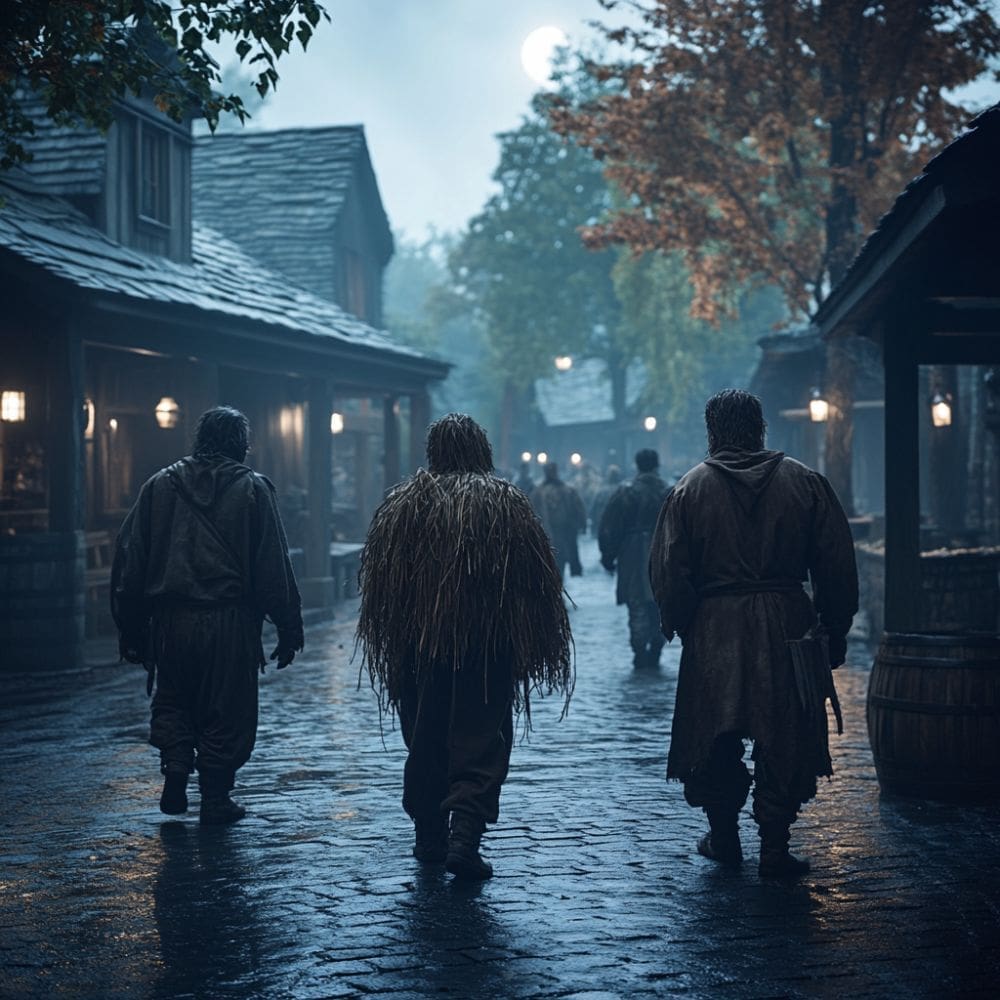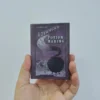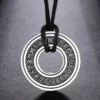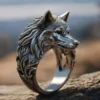
Exploring the Roots of Modern Halloween Costumes
In the dimly lit villages and towns of medieval Europe, All Hallows’ Eve—what we now call Halloween—was a night steeped in mystery, fear, and superstition. This was a time when people believed the veil between the living and the spirit world was thin, allowing otherworldly beings to cross into the human realm. While today’s Halloween costumes often aim for fun or fright, in the medieval period, dressing up and donning disguises served a different, more significant purpose: to ward off or deceive malicious spirits. This article explores how medieval people used costumes and disguises in Halloween traditions, the materials they employed, and the role these costumes played in their worldviews and cultural beliefs.
The Origins of Medieval Disguises on All Hallows’ Eve
Halloween’s roots trace back to the ancient Celtic festival of Samhain, celebrated on the night of October 31. For the Celts, Samhain marked the end of the harvest season and the beginning of winter, a time associated with death. It was believed that during Samhain, the boundary between the worlds of the living and the dead was blurred. Spirits, both benevolent and malevolent, were said to roam the earth, and many traditions emerged to safeguard against them.
Medieval people adapted these customs as Christianity spread through Europe, incorporating pagan beliefs into All Hallows’ Eve, a precursor to All Saints’ Day on November 1. The idea of disguising oneself on this night grew from the desire to either evade or confuse these wandering spirits. By dressing as ghosts, monsters, or other unsettling figures, people believed they could either blend in with the spirits or avoid drawing their ire. Thus, the first Halloween costumes were born, not from a desire for fun, but from a genuine need for protection.
Materials Used in Medieval Disguises
In medieval Europe, clothing options and fabric choices were limited by social status, local resources, and economic constraints. Most people could not afford elaborate costumes, so they turned to readily available materials, making clever use of what they had. The primary materials in medieval disguises included:
- Animal Skins and Pelts: Some people would wear animal skins and masks crafted from animal heads. This was particularly popular in rural areas where livestock played a significant role in daily life. By wearing animal hides, people hoped to embody the creature’s spirit, intimidating any lurking spirits or becoming one with nature’s creatures to avoid detection.
- Rags and Tattered Clothing: Common folk used old, worn-out garments to create crude disguises. Layered and torn fabric would be arranged to make the wearer appear monstrous or ghost-like. Often, this attire resembled burial clothes, enhancing the appearance of a ‘walking dead’ figure, blending the living with the spectres believed to be wandering that night.
- Face Paints and Natural Dyes: Basic dyes from plants, berries, and charcoal served as makeshift face paints to create eerie, shadowy visages. People used these pigments to paint hollow eyes, sunken cheeks, and other ghostly features, adding to the mystery and fright. These natural substances could be smeared or layered to create gruesome or skeletal appearances, deepening the effect of the disguise.
- Masks of Woven Straw or Bark: Some communities used natural materials, such as straw or tree bark, to fashion simple masks. These materials could be woven together or crudely shaped to cover the face, masking the wearer’s identity. Straw masks, in particular, were accessible to farmers, allowing them to appear as faceless beings—another tactic to confuse any spirits that might come too close.
- Household Items: Items from daily life, like pots, were sometimes repurposed as helmets or masks. A large pot or a piece of kitchenware could obscure the face, creating an unusual, dehumanised appearance that was unsettling to any wandering spirits—or, indeed, to other humans.
The Role of Disguises in Ward-Off Rituals and Superstitions
For medieval people, these disguises were far more than simple costumes; they were tools of protection grounded in deeply held beliefs. Spirits and supernatural beings were perceived as real, present threats, and Halloween night was fraught with potential dangers. Superstitions surrounding spirits were central to medieval life, and many feared that these spirits could cause misfortune, illness, or even death. The traditions of disguising oneself were bound up with the notion of “ward-off” rituals. Dressing up, often in terrifying or grotesque attire, served two main purposes:
- Tricking Malevolent Spirits: The concept of “mumming” or “guising”—going door-to-door in costume—originated as a way to confuse spirits who might be seeking out specific people to haunt or harm. By donning a disguise, a person could evade the notice of these spirits, appearing as a fellow phantom rather than a human target.
- Placating Otherworldly Beings: In some cases, people would dress up as spirits or otherworldly beings to appease them. By embodying these beings, they hoped to mimic or honour the spirits, believing this act might spare them from misfortune. They might leave offerings at their doors or recite prayers to further placate the spirits, adding to the costume’s protective symbolism.
Symbolic and Cultural Beliefs Surrounding Costumes
The concept of dressing up on Halloween was deeply rooted in the medieval worldview, where life and death were seen as intertwined, and supernatural forces were ever-present. The medieval Church often sought to suppress or redirect such practices, labelling them as pagan, yet the customs endured, partly due to the community’s unyielding belief in spirits and the importance of appeasing or tricking them. Costumes became a powerful, symbolic act of defiance against death and fear, representing the common person’s desire to have some control over unseen forces.
Moreover, the medieval use of disguises speaks to the era’s relationship with mortality. Halloween’s connection to death, both through the symbolism of Samhain and the observances of All Hallows’ Eve, reminded people of their own mortality. By masquerading as spirits, they performed a symbolic dance with death, a reminder that life was fleeting and that, come winter, the boundary between worlds was fragile.
Evolution from Protection to Festivity: The Path to Modern Halloween Costumes
As centuries passed, the solemnity of Halloween costumes began to shift. By the early modern period, Halloween customs became a mix of religious observances, folklore, and community celebrations. The rise of “souling” and “guising” introduced new elements. Young people would go door-to-door dressed in costume, offering prayers for the dead in exchange for “soul cakes” or treats, a practice that echoes in modern-day trick-or-treating. The costumes remained simple, but the purpose became more festive and less fearful, emphasising community rather than protection.
When European settlers brought Halloween to North America, these customs mingled with local beliefs, gradually evolving into the Halloween festivities familiar today. Costumes became increasingly playful, and the idea of frightening spirits transformed into a form of entertainment rather than survival.
From Medieval Beliefs to Modern Celebration
The medieval practice of disguising oneself on Halloween night reflects a rich tapestry of cultural beliefs, superstitions, and survival instincts. For the medieval mind, Halloween was a night when the otherworld was perilously close, and spirits posed genuine dangers. To ward off these entities, people resorted to crude disguises made from animal skins, straw, rags, and natural dyes, each piece serving as both a physical shield and a symbol of spiritual protection.
Today’s Halloween costumes—be they playful, spooky, or extravagant—trace their roots back to these early traditions. What once was a means of defence against supernatural threats has transformed into a joyous expression of imagination and fun. Yet, each time we don a costume on Halloween, we participate in an ancient ritual, echoing the actions of medieval people who faced the night with fear and reverence, hoping their disguises would keep the spirits at bay. The costumes may have changed, but the connection to our ancestors’ practices endures, a reminder of the timeless allure and mystery of Halloween.
In the end, our modern Halloween traditions retain a vestige of the medieval spirit, celebrating a time when disguises held a power beyond mere amusement—a power to protect, to transform, and to commune with the unknown.
Explore our Medieval Halloween guide






